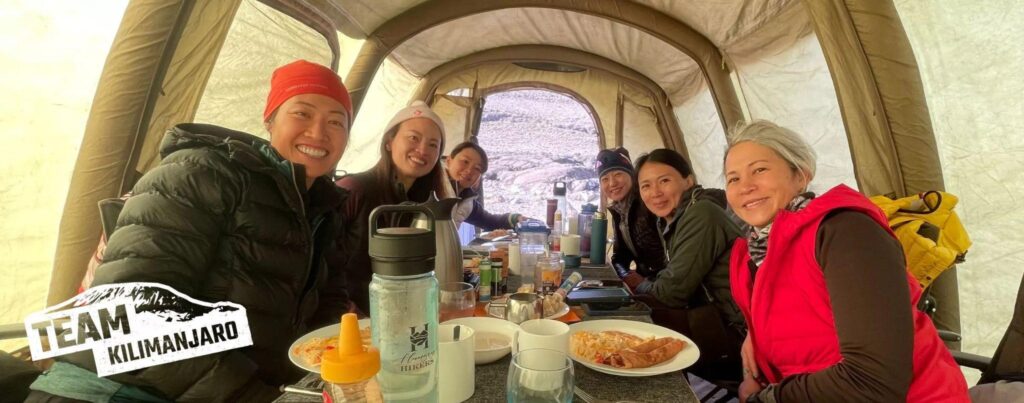Every family has its milestones: a child’s first steps, the first day of school, graduations, holidays. Some are small and everyday, others are larger than life. To climb Kilimanjaro, Africa’s highest mountain at 5,895 metres, is one of those rare milestones that can redefine not only how you see yourself, but also how your family sees what’s possible.
Kilimanjaro is unique among the Seven Summits because it is non-technical. It doesn’t require ropes, ice axes, or mountaineering skills. Instead, it demands patience, stamina, and the courage to take one step after another. For parents, it becomes a personal journey that teaches lessons in resilience and determination — lessons children often learn best when they see them lived out in real life.
How Long Does It Take?
The first question many ask is how long does it take to climb Kilimanjaro. The answer is as much about values as logistics. While it is technically possible in five or six days, these short climbs carry high risks of altitude sickness and a much lower success rate.
The most successful and rewarding climbs take seven to nine days. That extra time allows the body to adjust to the altitude and gives climbers the chance to enjoy the mountain’s five distinct ecological zones — rainforest, moorland, alpine desert, high alpine, and summit glacier. Like raising a family, the climb is not a sprint; it’s a steady, thoughtful journey where pacing makes all the difference.
The Value of Choosing the Right Path
Just as families consider the best paths for their children — schools, hobbies, life lessons — climbers on Kilimanjaro must choose their route carefully. Some popular paths, like Machame or Umbwe, are crowded and inefficient, with a needless 401-metre ascent that is quickly lost into Karanga Valley.
Team Kilimanjaro’s TK Lemosho Route is designed with care to avoid wasted effort. It offers quieter trails, a more gradual ascent, and a smoother acclimatisation profile, making it a favourite for those who want both high success rates and a richer, calmer experience. For parents, this echoes the idea that the most rewarding paths are often not the quickest, but the ones chosen with foresight and balance.
For those seeking something unforgettable, the Excel Extension allows climbers to spend a night inside the crater at 5,729 metres — a rare opportunity to see the mountain from a perspective very few will ever know.
Seasons and Timing
Another key decision is when to go. The best time to climb Kilimanjaro is during the dry seasons: January to March and June to October. These months offer stable weather, clearer skies, and safer trails — the equivalent of planning a family holiday during school breaks.
Others deliberately choose the quieter rainy seasons — April to May or November — for a different atmosphere. These climbs are harder but more solitary, with lush landscapes and quieter camps. The choice, as in family life, depends on whether you prefer stability and predictability or adventure and resilience in the face of challenges.
Support Systems That Feel Like Home
On Kilimanjaro, no one climbs alone. National Park regulations require guides and porters, and for good reason. They are the lifeline of the climb, setting up camp, preparing meals, carrying loads, and offering encouragement when fatigue sets in.
Team Kilimanjaro offers seven distinct support “series,” designed like different lifestyles. About 70 percent of climbers choose the Advantage Series, which provides a healthy balance of comfort and adventure: three-course meals, private toilets, and welcoming mess tents. Others prefer the minimalism of the Superlite Series, where climbers carry their own gear, or the VIP service of the Hemingway Series, where every detail is taken care of.
For parents, this choice mirrors everyday family life: balancing comfort with resilience, independence with support.
The Summit Night
The defining moment comes on summit night. Climbers wake around midnight, moving slowly by headlamp through the cold, thin air for six to eight hours before reaching Uhuru Peak at dawn. As the sun rises, glaciers shimmer in the light, and the plains of East Africa stretch endlessly below.
It is an overwhelming experience — not just for the achievement, but for what it represents. For families back home, this story becomes a parable: that the hardest climbs bring the brightest rewards, and that perseverance through the darkest hours leads to moments of unforgettable light.
Returning Home
Many climbers extend their adventure with a safari in the Serengeti or days on Zanzibar’s beaches, celebrating their achievement in landscapes as inspiring as the climb itself. But even for those who head straight home, Kilimanjaro changes something inside. Parents return stronger, more grounded, and with a story that reinforces the values they share at home: patience, preparation, teamwork, and courage.
Final Reflection
To Kilimanjaro veterans, the mountain is more than a physical peak. It is a life teacher, a proving ground, and a memory that endures for generations. By preparing carefully — knowing how long does it take to climb Kilimanjaro, selecting the best time to climb Kilimanjaro, and choosing thoughtful routes like TK Lemosho — parents can transform this adventure into a family legacy.
Kilimanjaro is not simply about summiting. It is about bringing back stories of resilience, joy, and vision that inspire the next generation to believe: if Mum or Dad can climb to the roof of Africa, then there is no dream too high for them to reach.
